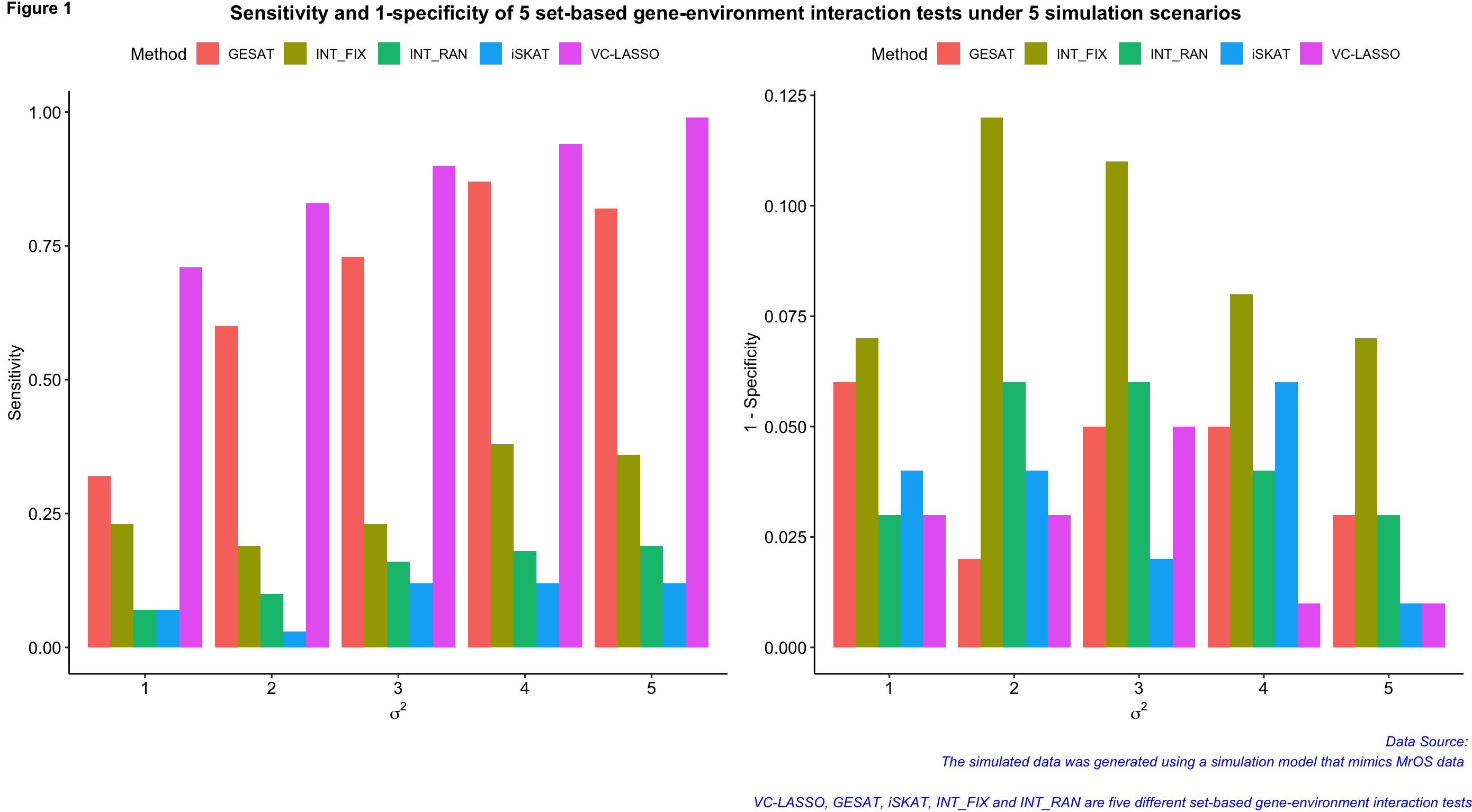Detecting gene-environment interactions using variance component selection with an application in MrOS data
Date:
Abstract:
Many existing studies suggest that the interplay of environmental factors and genes affects bone mineral density [1, 2]. Thus, detection of gene-environment (GE) interactions provides critical information for studying the mechanism of osteoporosis and designing intervention and prevention strategies. In our study, we proposed a gene-environment interaction model that includes multiple environment variables. The GE interactions are modeled as multiple random effects where each gene-environment interaction effect acts as a variance component in the model. Then, the selection of GE interactions is performed by using the LASSO penalty on the variance components. While waiting for the IRB approval of our study, we generated the simulation datasets that mimic The Osteoporotic Fractures in Men (MrOS) Study to assess the performance of the proposed method. The simulated genotype data was generated by using a coalescent model with a simple constant-size population and constant recombination rate. 10,000 Single-Nucleotide Polymorphism (SNP) were simulated as the genotype dataset. For all the scenarios, we randomly selected 10 SNPs with Minor Allele Frequency (MAF) less than 0.05 and other 10 SNPs with MAF greater than 0.05. Thus, 20 SNPs were presented under all simulation scenarios. The prediction performances of different methods were assessed with 100 simulated datasets under each simulation scenario. When the effect size of the variance component (σ^2) is 1, the sensitivity of our method is 0.72; when the effect size of the variance component (σ2) is 5, the sensitivity of our method becomes 0.97. Under all simulation scenarios, our method demonstrated better performance than other existing set-based GE interaction tests, such as the gene-environment set association test (GESAT) and the interaction sequence kernel association test (iSKAT).
References
[1] Herbert, A.J., Williams, A.G., Hennis, P.J. et al. The interactions of physical activity, exercise and genetics and their associations with bone mineral density: implications for injury risk in elite athletes. Eur J Appl Physiol 119, 29–47 (2019).
[2] Hou, R., Cole, S.A., Graff, M. et al. Genetic variants and physical activity interact to affect bone density in Hispanic children. BMC Pediatr 21, 79 (2021).

